1,577 days, 2,409 entries ...
Newsticker, link list, time machine: HOLO.mg/stream logs emerging trajectories in art, science, technology, and culture––every day
“There is a death drive in all of this. It is a drive to lethality. It is a drive towards self-destruction but also the destruction of all others. That is what underlies these systems.”
Dani Ploeger’s solo exhibition “Destructive Circuits” opens at V2_, Rotterdam, surveying works from his long-running research into the appropriation of everyday technology for homemade weaponry. According to the UN, so-called Improvised Explosive Devices (IEDs) kill thousands every year and profoundly impact security. Ploeger illuminates IED construction, their history, and links to globalized techno-consumerism and media politics with the display of trigger systems, timer devices, a sci-fi short, and an interactive sculpture that ‘blows up.’
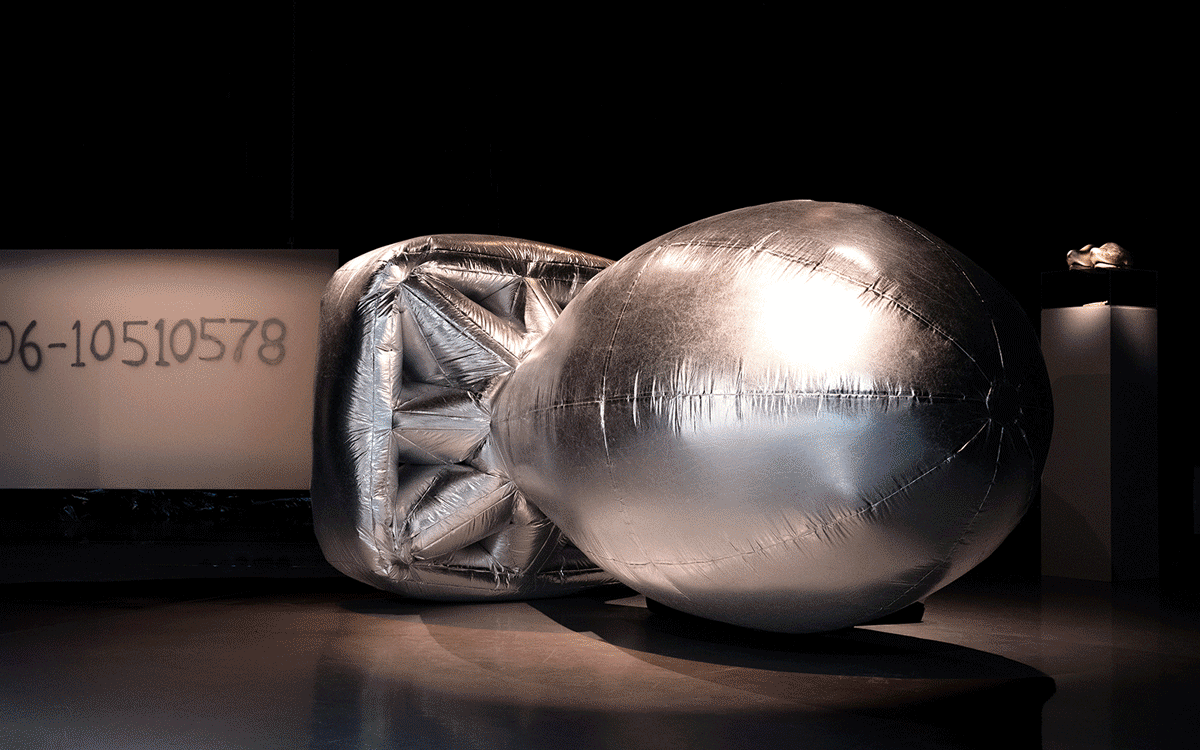
Italian game developer, artist, and educator Paolo Pedercini releases The New York Times Simulator (2024), a fast-paced browser game where players steer the news titan’s fortunes as editor-in-chief. Inspired by Lucas Pope’s 2012 Flash game The Republia Times, Pedercini’s parody game problematizes corporate media and propaganda. The goal: Align front page contents and headlines with powerful interests to “lead the most trusted newspaper through our tumultuous times and into the digital age.”
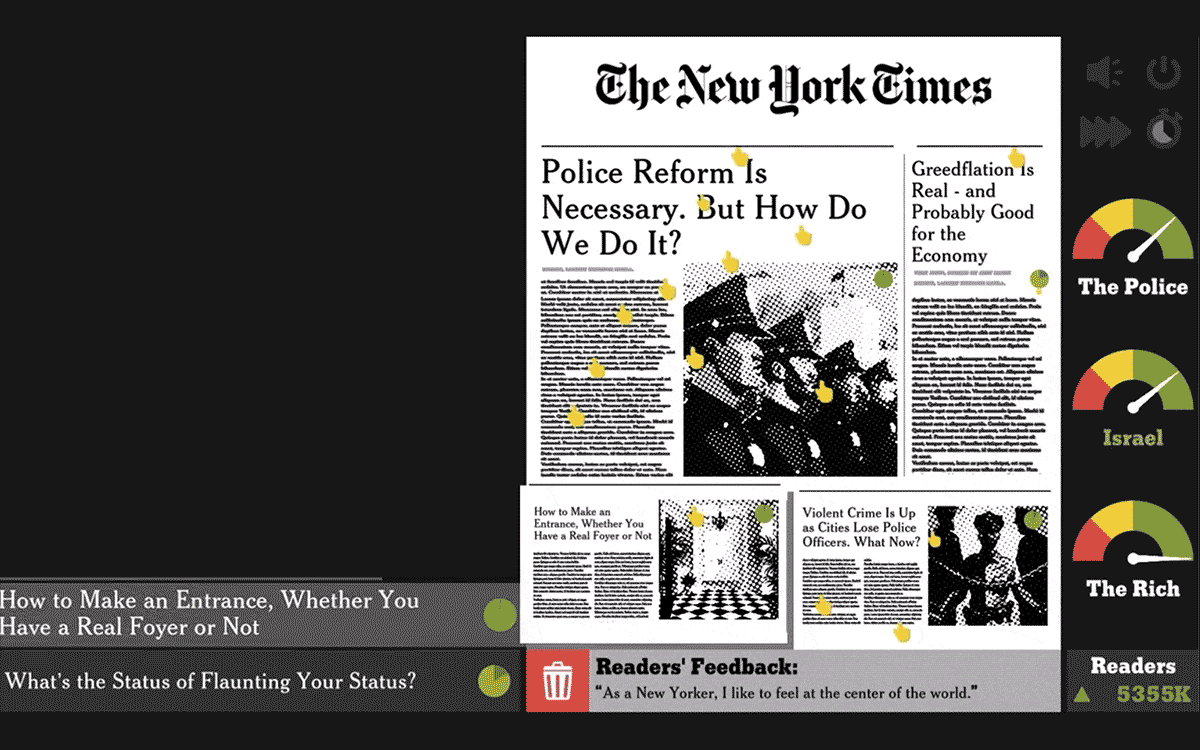
“Calculating Empires: A Genealogy of Technology and Power, 1500–2025,” a show by researchers Kate Crawford and Vladan Joler opens at Fondazione Prada Osservatorio in Milan. Picking up where their collaboration Anatomy of an AI System (2018) left off, the duo maps how “empires of past centuries are echoed in the technology companies of today.” Exhibited is a cabinet of curiosities, a map room, and ephemera related to data and control spanning six centuries.
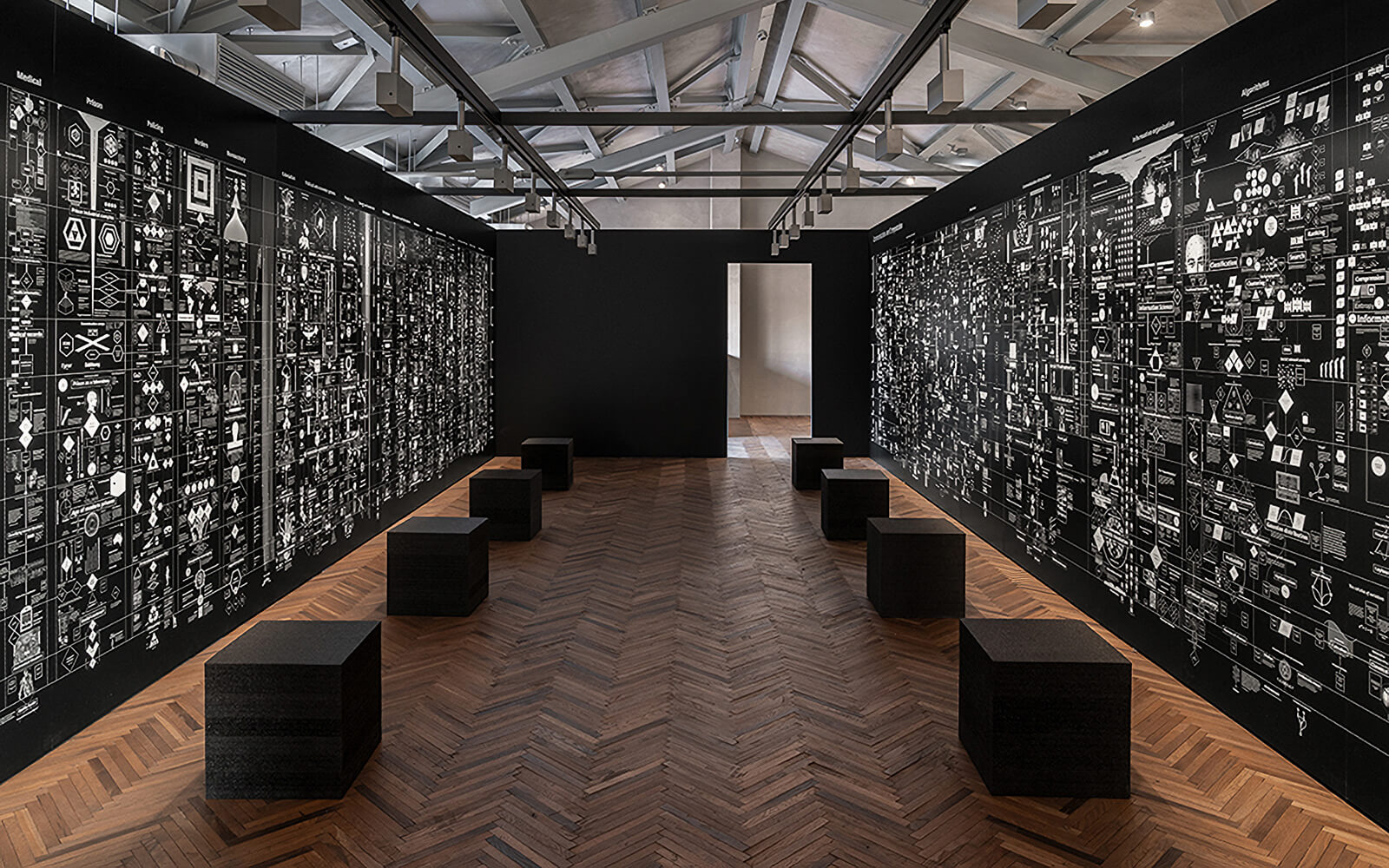
“The Spectre of the People,” the flagship exhibition of the 2023 Thessaloniki Photobiennale opens in its namesake port city in Greece. Curated by Julian Stallabrass, artists including Lauren Greenfield, Carey Young, and The Archive of Public Protests explore populism. DISNOVATION.ORG contributes ONLINE CULTURE WARS (2023, image), a map of the “over-politicization of seemingly mundane topics, practices, and cultural elements,” with Donald Trump at the centre of a disinformation vortex.
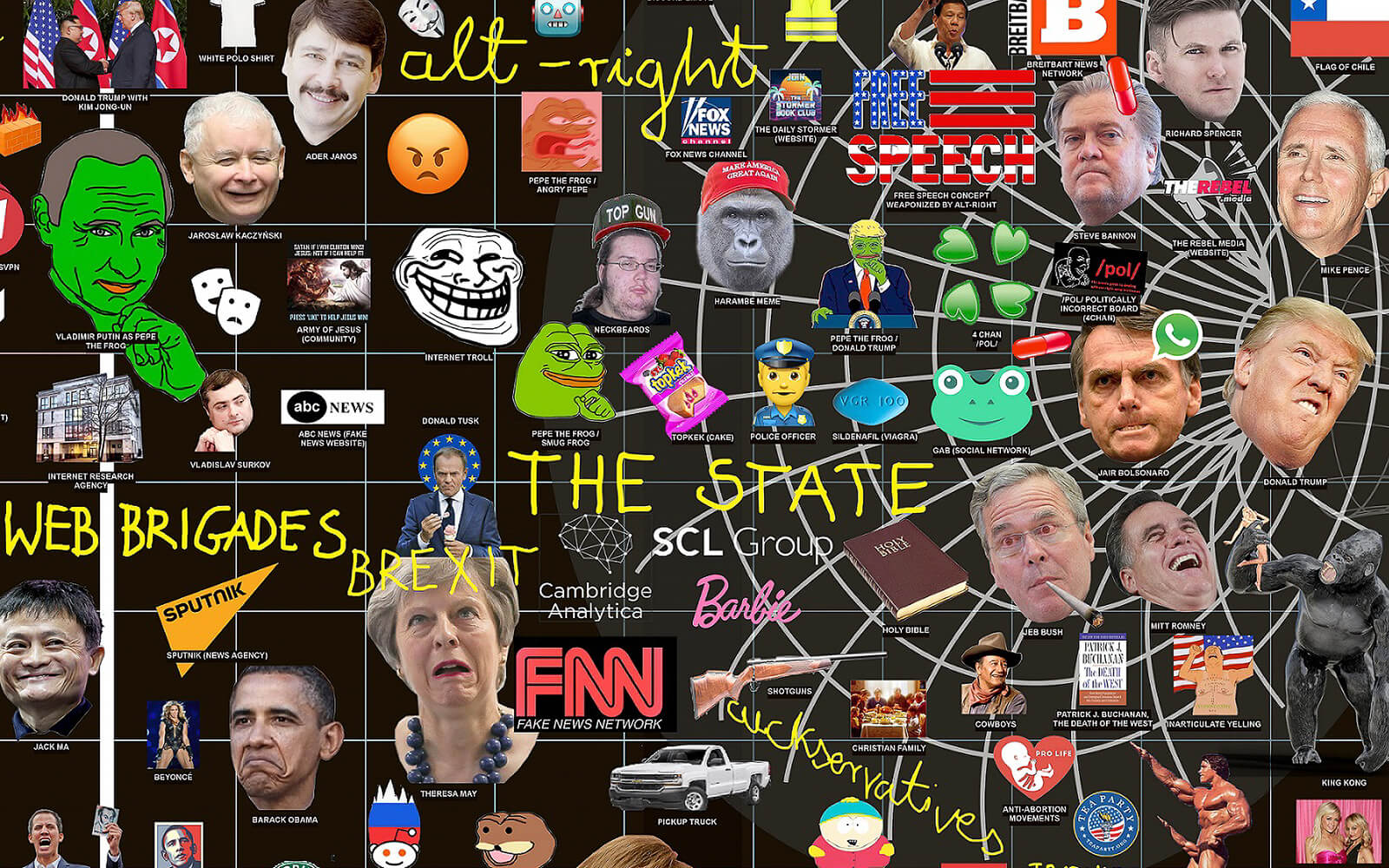
“3D analysis shows patterns of radial fragmentation on the southwest side of the impact crater, as well as a shallow channel leading into the crater from the northeast. Such patterns indicate a likely projectile trajectory with northeast origins.”
“I thought that the way I had structured it was enough of an extrapolation that I wouldn’t have to deal with precisely the question you’re asking. And that has been obliterated in the last few years. That, to me, is terrifying.”
“While the view from above has historically been aligned to an imperial gaze, the use of commercial drones has co-opted this sightline as a part of protest against imperialism and colonisation.”
Ismael de Anda III and Eugene Ahn’s collaborative exhibition “Revolution Generators” opens at panke.gallery, Berlin, investigating territorialization at the U.S. and Mexican border, where Anda was raised, and the once divided German capital. 25 digital collages, printed on aluminium, capture real and fictional landscapes and are paired with projections and AR sculptural forms. A recurring motif are (hostile) metal turnstiles lifted from U.S. border crossings and cast into the sky as colourful satellites.
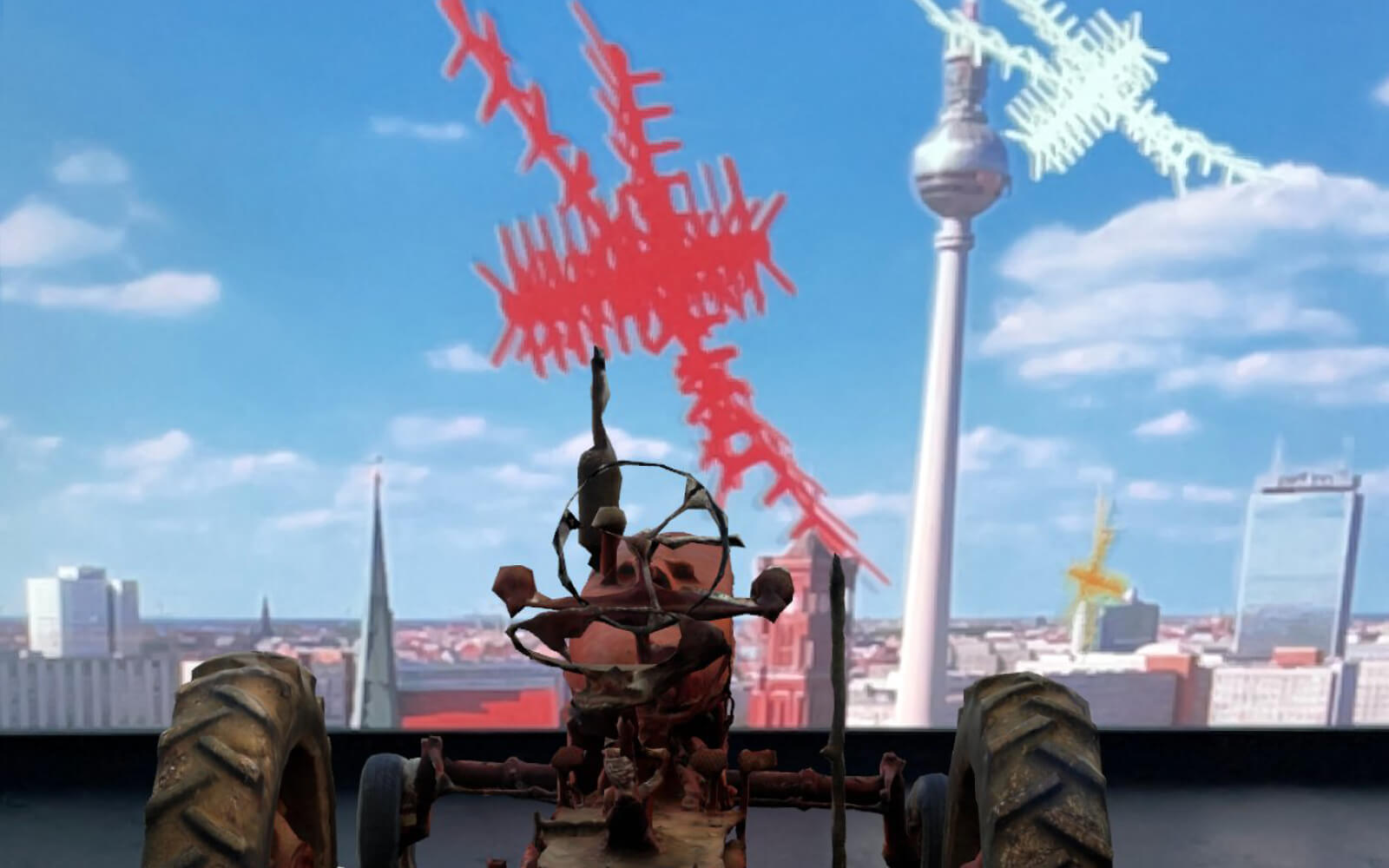
Antony Loewenstein
The Palestine Laboratory
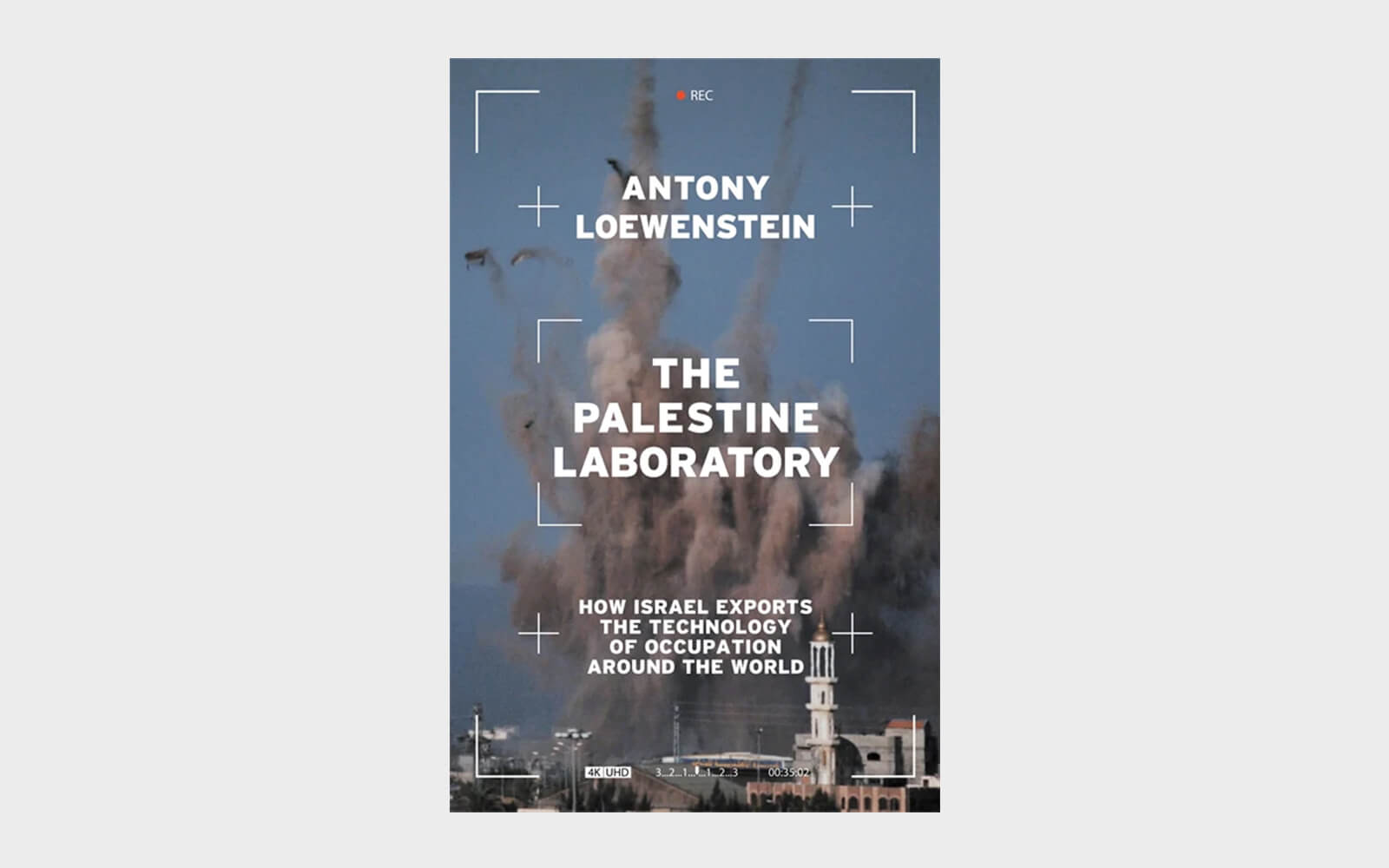
Taking its name from the eponymous searing neon work by feminist conceptual artist Claire Fontaine (2012, image), “Someone is getting rich” opens at Amsterdam’s Tropenmuseum. Curated by Carrie Pilto, the show invites the aforementioned Fontaine along with Eline Benjaminsen, DIS, Femke Herregraven, Petr Pavlensky, and 10 other artists to present works that speak truth to power by “revealing how the aftermath of colonialism is still embedded in the financial sector today.”
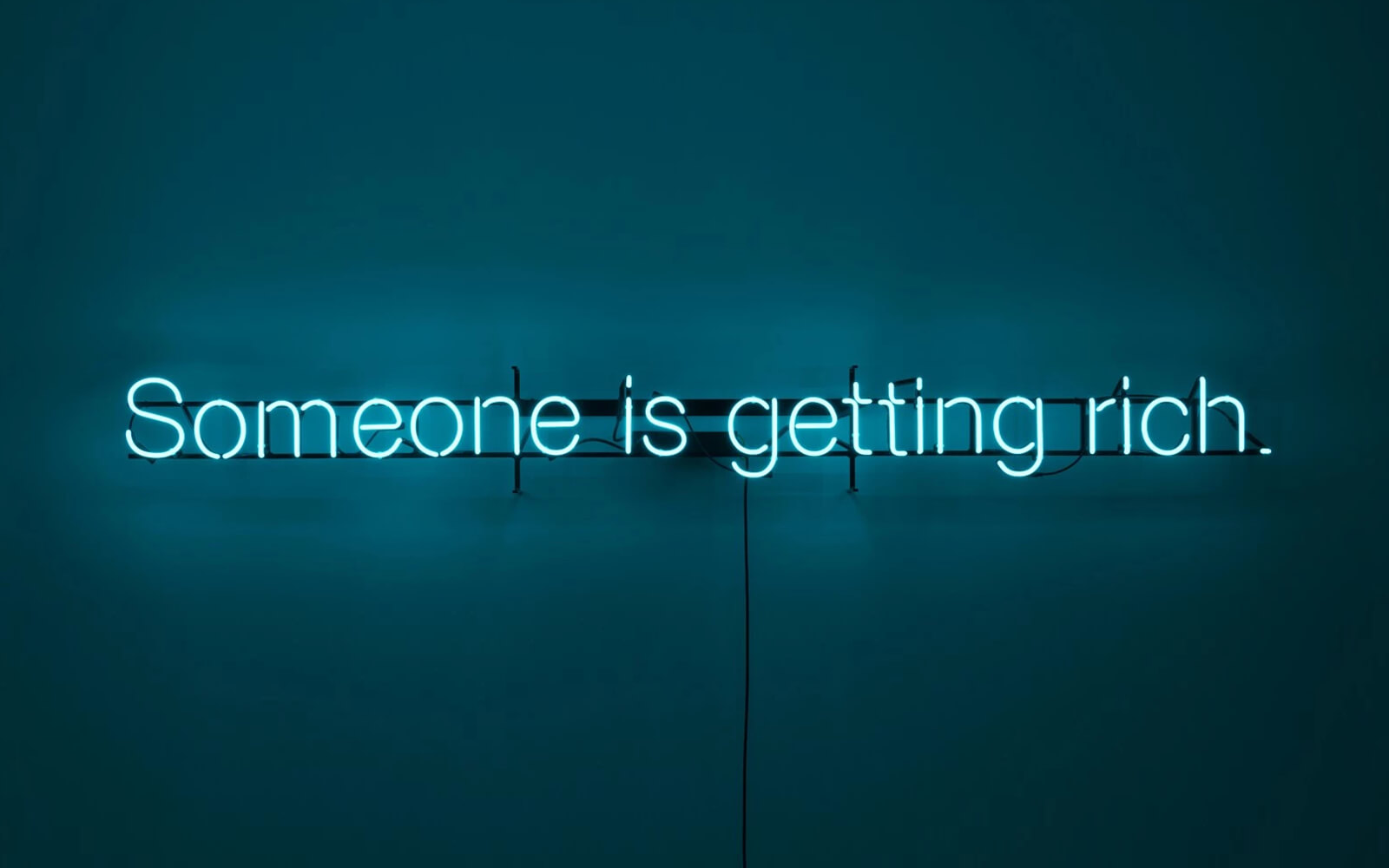
“It’s like saying ‘we had knives before, so what’s the difference if we have a submachine gun?’ Well, a submachine gun is just more efficient at what it does.”
“Today Taiwan produces around one third of the new computing power we rely on each year. It produces ninety percent of the most advanced processor chips.”
“As much as they might aspire to go back to a medieval world, WhatsApp comes in handy.”
“Among the drivers’ complaints were the obscure way in which their accounts were blocked and the inequitable way in which fees earned by drivers were unilaterally decided and implemented by Uber.”
Three Doors—Forensic Architecture/Forensis, Initiative 19 opens at Frankfurter Kunstverein (FKV). Featuring London-based Forensic Architecture working with local partners, the show (re)presents evidence in three instances of racially motivated violence in Germany. Oury Jalloh’s Cell: Smoke Traces (2022, image), demonstrates the central architectural motif, by modelling the circumstances of an African asylum seeker’s burning death, while in police custody in 2005.
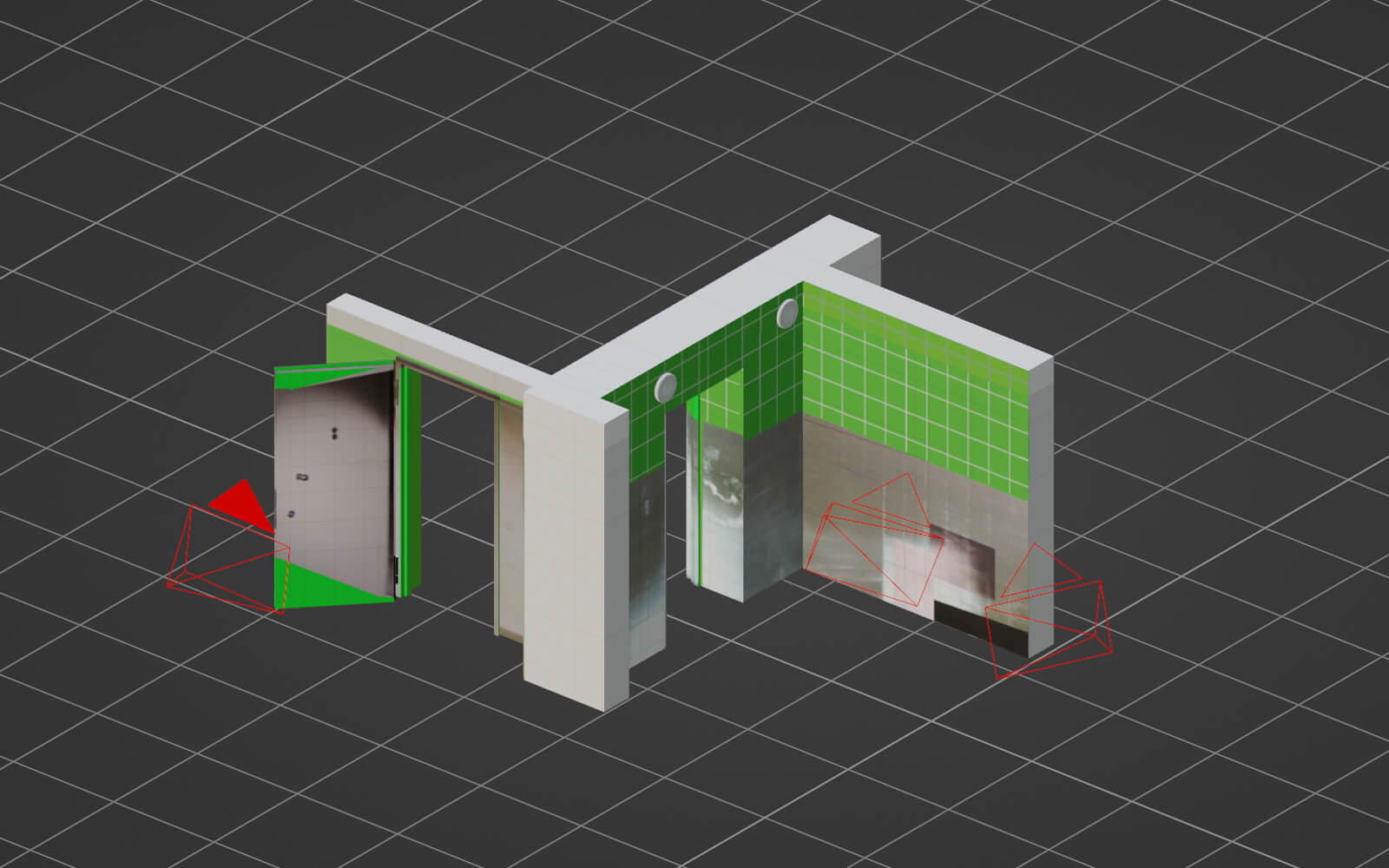
In the first of six performances, Kerry Guinan’s The Red Thread links six industrial sewing machines at Dublin’s The Complex with six counterparts at a garment factory in Bangalore, India. “The kinetic installation appears to be self-operating, but there are puppeteers in hiding,” the Irish artist notes about the workers over 8,000 kilometers away. By eliminating that distance, she hopes to “make visceral the extraordinary scale, and underlying humanity, of the globalised economy.”
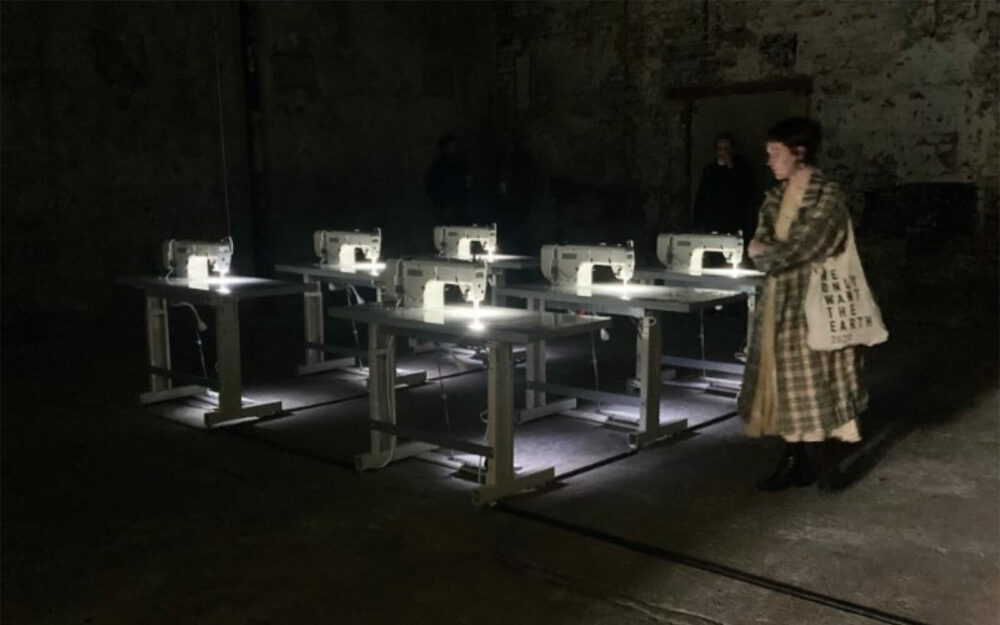
“The Terraforming was convened on behalf of new foundations for a viable planetary future. This takes on critical urgency when that future is put in direct peril. To ensure that the future is not canceled is a fight we cannot lose.”
“Unruly Archives,” an exhibition surfacing traces of “the global footprint of warfare and organized violence,” opens at The Blackwood in Mississauga, Canada. Curated by Amin Alsaden, conflict-focused works by Emily Jacir, Walid Raad, and Zineb Sedira are included. Iraqi artist Ali Eyal’s contribution 6×9 doesn’t fit everything (2021, image), for example, chronicles the heartbreak and frustration he felt when ridiculed by U.S. soldiers, after his father’s car was incinerated.
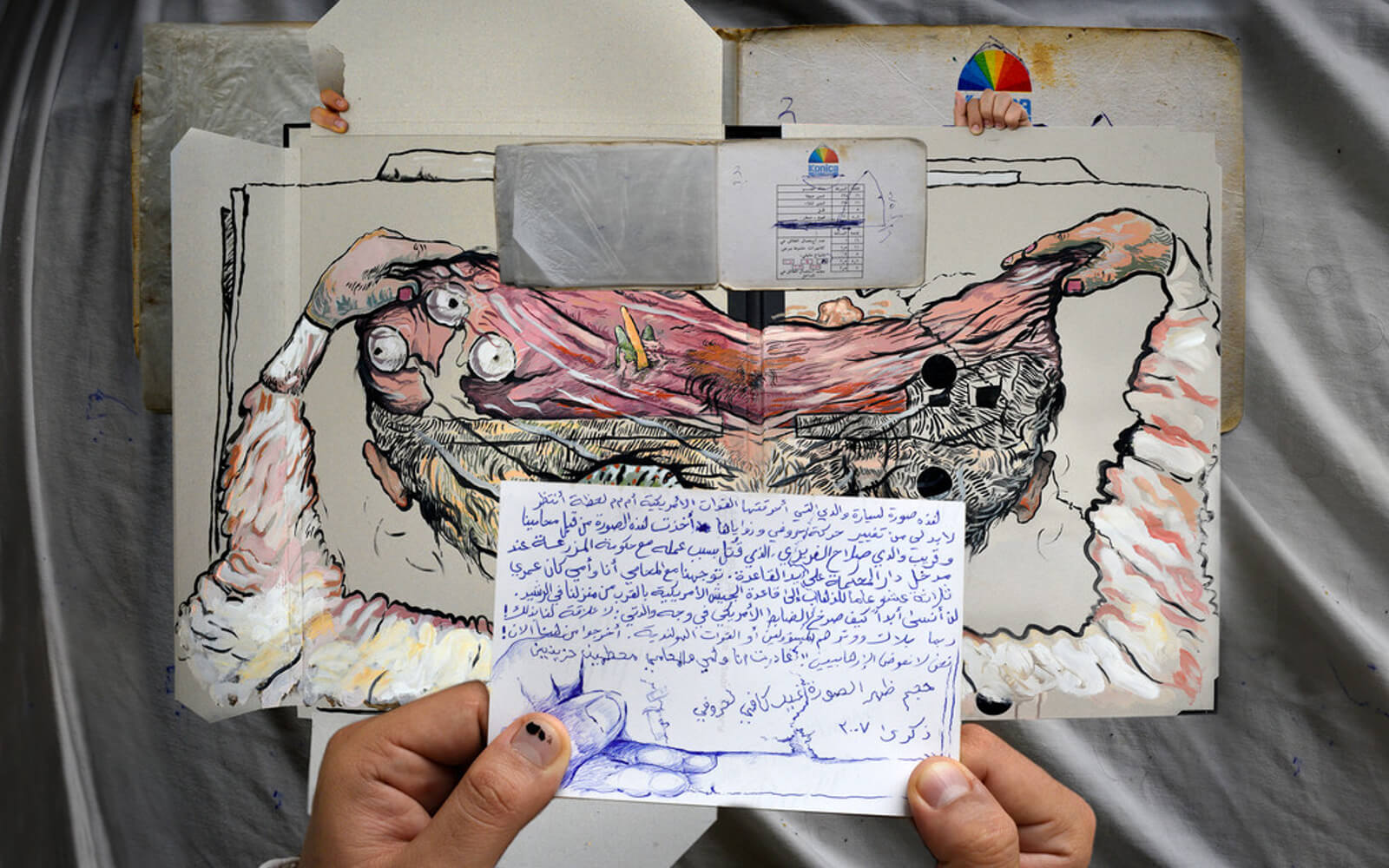
Daily discoveries at the nexus of art, science, technology, and culture: Get full access by becoming a HOLO Reader!
- Perspective: research, long-form analysis, and critical commentary
- Encounters: in-depth artist profiles and studio visits of pioneers and key innovators
- Stream: a timeline and news archive with 1,200+ entries and counting
- Edition: HOLO’s annual collector’s edition that captures the calendar year in print
